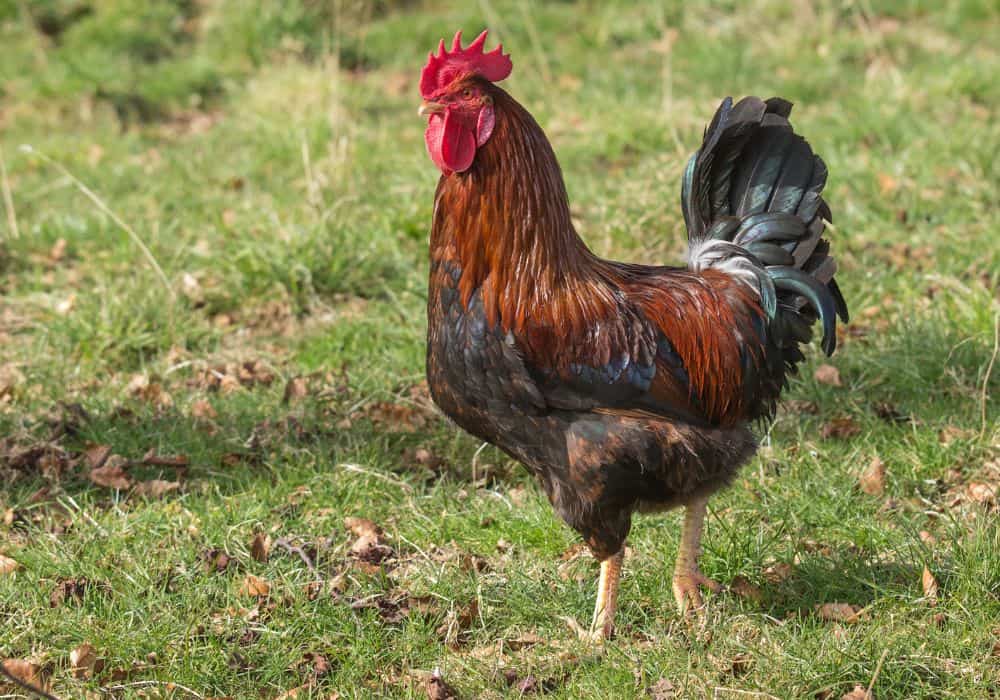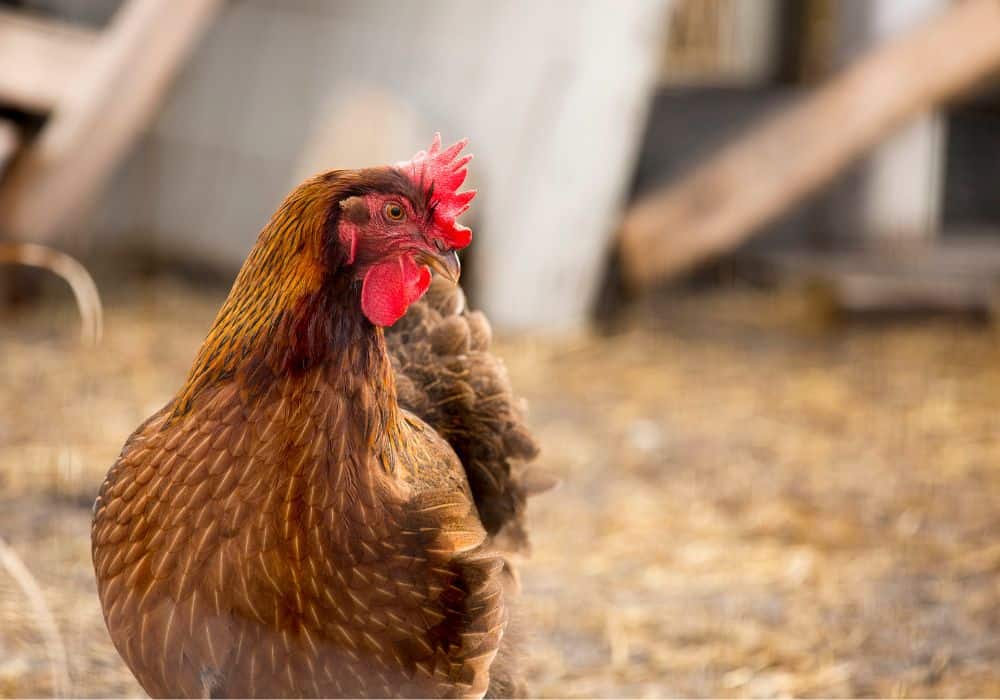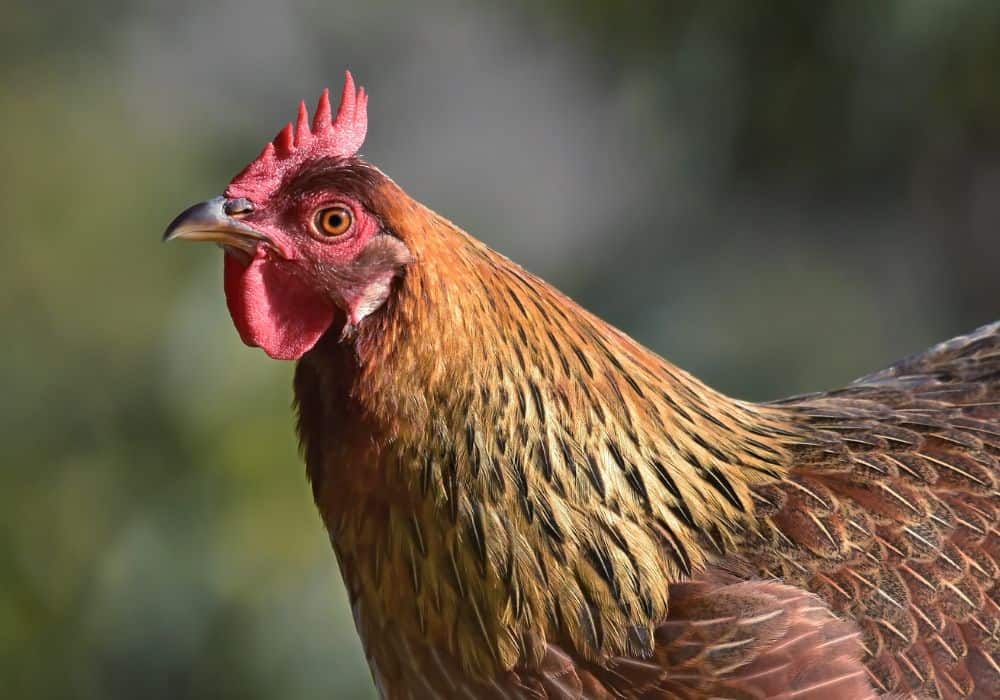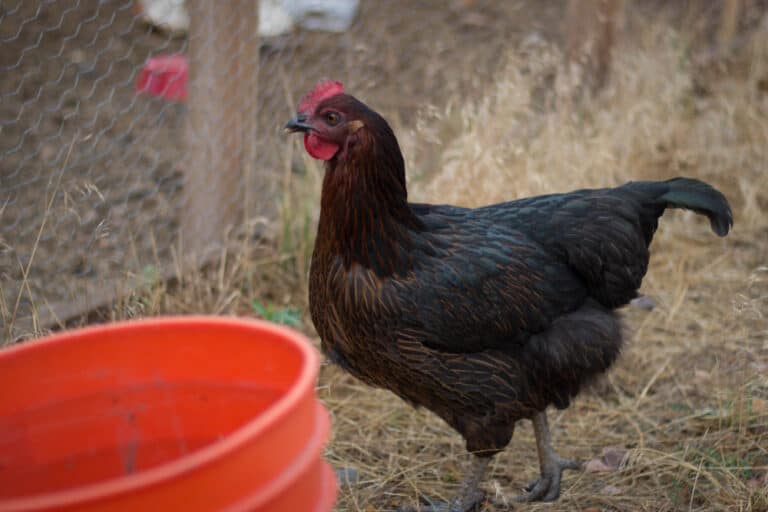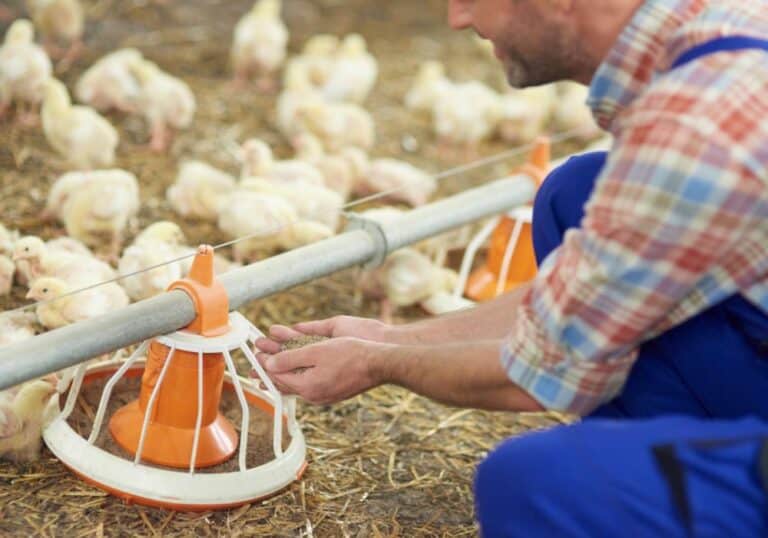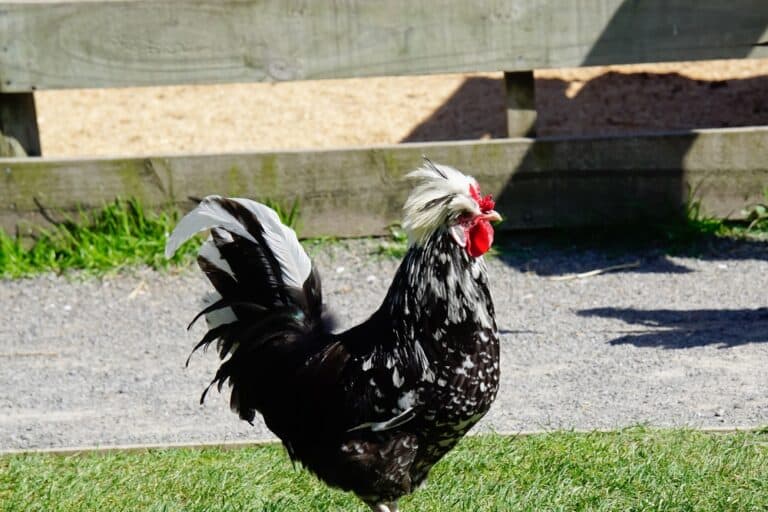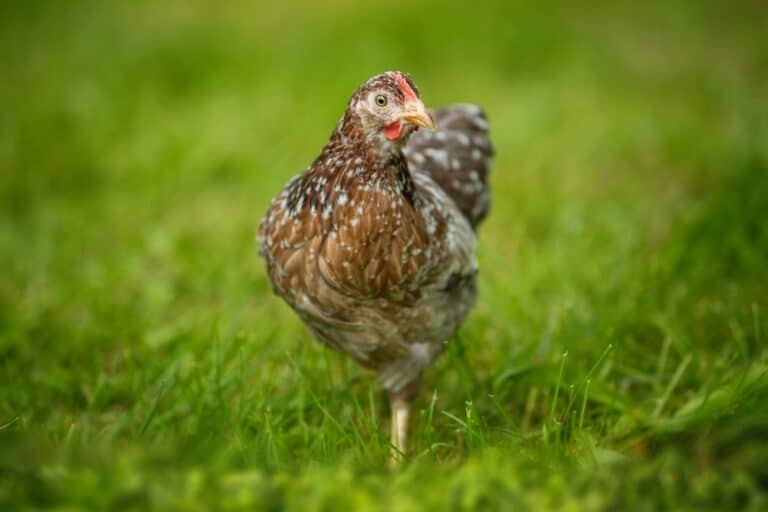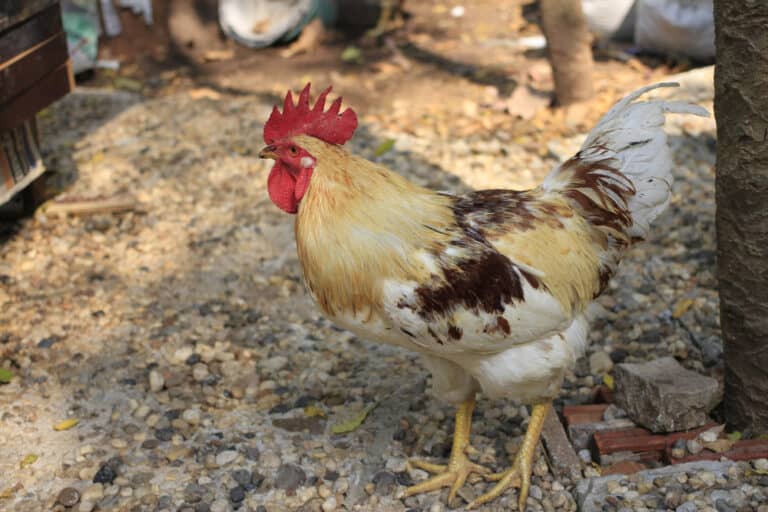Are you thinking of purchasing some Welsummer chickens to keep in your chicken flock? Before you decide, you need to know what the breed is like, especially if you are introducing the chickens to an existing flock.
In this article, we will explore the Welsummer breed, including their temperament, history, coop setup, and appearance. The information will help you decide if the Welsummer chicken is the right breed for you.
The Welsummer Chicken History
The Welsummer chicken breed is just over one hundred years old. The bird was first created in the village of Welsum in the Netherlands by a Dutch breeder. It was created to be a dual-purpose chicken meaning it was good at producing eggs but also provided plenty of meat to eat.
The Welsummer is the product of several chicken breeds, including the Rhode Island Red, partridge Leghorn, Barnevelder, and partridge Cochin. However, some people say that breeds such as Brahma and Malay may also have been used to create the Welsummer chickens.
The Welsummer chickens were first introduced to the public at the Hagues’ World Poultry Congress in 1921 and it was well received by European poultry keepers. The Welsummer was first brought to England in 1927. A year later, they were brought from the UK to the United States.
While the Poultry Club of Great Britain accepted the breed as early as 1930, they were not officially recognized in America by the American Poultry Association until 1991. Since then the numbers of Welsummer chickens have steadily increased in the US.
What Does the Welsummer Look Like?
The Welsummer hens and roosters have very different appearances. The bodies of the hens are dark brown and they have white or light brown feather shafts noticeable throughout their feathering. On the nape and neck, the feathers turn golden brown with a shading of darker brown. Hens in the Welsummer breed weigh about six pounds.
The roosters have golden, chestnut brown, free-flowing hackles, and saddle feathers. The sickles and chest are beetle-green and lustrous. The wing front and bows are reddish brown. The roosters have a large full tail and they weigh about seven pounds.
Other Features
The Welsummers have a single comb that shows five points. Its comb, earlobes, and wattles are red, its eyes reddish bay, and the beak is either black or horn colored. Their shanks are clean of feathers and their skin is yellow. These robust birds have full breasts, together with a long flat, broad back. Their stance is upright.
Welsummer Chicken Behaviour
The Welsummer chickens are intelligent and when trained, will eat from your hand. They are known to be calm and friendly chickens who are not too pushy when mixed with other breeds. In a pecking order, they often place in the middle.
They don’t like cuddling but won’t mind you picking them up for a moment. They can also be good around kids but you should always supervise them, especially around young children who might make sudden moves. This is especially true if you have a Welsummer rooster because they can become protective of their flock.
While the Welsummers are keen forages, they are not very good flyers and will only manage a few feet straight up into the air to escape perceived dangers. Because of this poor flying ability, you can confine them using just minimal fencing.
They are Noisy
If you are considering having Welsummer chickens in a backyard chicken coop and you live in an urban area, you might need to opt for another breed instead. Welsummers can be very noisy and you could end up upsetting your neighbors.
The Welsummers have a loud egg song and they are all likely to join in. They will also soon let you know if they are unhappy or if they perceive danger. The rooster especially will sound the alarm if he feels his flock is threatened.
Egg Production
While some people say Welsummers will produce around 160 eggs per year, others claim they can produce up to 250. The truth is likely to be somewhere in the middle, with around four eggs in an average week. If you get much more than that, it can be a sign of a less pure bird.
They will produce fewer eggs during the winter and increase their egg-laying again in the spring. It lays dark brown eggs, which can have dark speckles. The pigmentation on the eggs is very rich and can be easily wiped off, for example, when you are cleaning them.
Do Welsummer Hens Get Broody?
A broody chicken is a hen that wants to become a mother and will sit on its eggs all day hoping they will hatch. Some breeds are broodier than others and the Welsummers are not known for their broodiness.
You may even hear people call them bad mothers. If you want to hatch some Welsummer chicks, choose your broodiest Welsummer, or even let a hen from another breed adopt the eggs as her own.
Welsummers Are Autosexing
In autosexing chicken breeds, such as the Welsummers, you can tell the male and female chicks apart as soon as they have hatched. This is a very useful quality if you are looking to grow your chicken from chicks and only want hens or roosters.
With Welsummers, the female chicks have a darker head and a more distinct pattern. The male chicks have a fuzzier, almost broken-looking patterning.
Coop Setup
Because the Welsummers are a standard-size breed, you can apply the four square feet for each chicken rule. However, if you have them in a mixed flock, six square feet would be better to avoid fighting or pecking between them and other breeds.
When roosting, they need between eight and ten inches per chicken. However, give them more space if you can so they can spread around a bit more especially when the weather gets hot.
For nesting, provide them with 12 x 12 boxes. The Welsummers prefer to lay their eggs in a boxed area so ensure you have enough boxes. It should be enough to have one box per three chickens as they don’t mind sharing.
It is better to let Welsummers free range but if this is not possible, they need to have at least eight to ten square feet each in a chicken run. Because they are intelligent chickens you will also need to provide them with activities, such as cabbage pinata, leaf piles, and dust bathing areas, to stop them from getting bored.
Welsummers Prefer Cooler Climates
Welsummer chickens prefer cooler climates and will do well in colder parts of the world. However, their combs and wattles can get frostbite so keep them in on cold winter days and keep their coop warm.
They can also tolerate hot weather but can overheat if they do not have shady places where to cool down. So when you are setting up their living environment, make sure you provide these cooler spots for them.
Health
The Welsummers do not have any unusual or breed-specific health issues. However, like any other chicken breed, they can get parasites such as mites or lice, so make sure you check your chickens regularly and treat them when needed. Healthy Welsummers have a life expectancy of five to eight years.
Feeding
Feed your Welsummer chicks with a starter feed that has at least 20% protein. The chicks need it to grow healthy and strong. When they get to the age when they are ready to lay eggs, change the feed to pellets, crumble, or layer feed that has 16% protein.
When your chickens begin to feed on foraged foods in addition to their feed, offer them insoluble grit unless they have access to small stones in the yard. They need grit or small stones to improve their digestion. You can also give them oyster shells, which contain calcium for their bone health and the quality of their egg shells.
You should always provide your chickens with plenty of fresh water. This is important all year round but especially in the summer. If the weather is really hot, you might even like to give them a block of ice so they can drink the water as the ice melts.
Conclusion
The Welsummer chickens are intelligent birds and keen foragers. They are friendly and can even be trained to eat from your hand, both the hens and roosters. However, you should always supervise children near the birds as they might peck if a child were to pull their feathers or make sudden moves they see as threatening.
Because the Welsummer is an active bird, it prefers free range but will tolerate confinement as long as it has plenty of space and things to keep them interested. They can be very noisy so they are not the best choice for populated areas.
Hopefully, you now have a better understanding of this Dutch breed, which will help you decide if they are right for you. If there is anything else you would like to ask, write your questions in the comment section.

